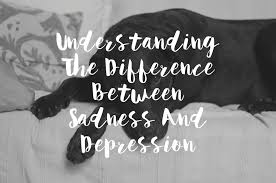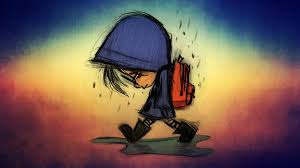Sadness is a universal emotion that we all experience at some point in our lives. It is an essential part of the human experience and can help guide us through difficult times. However, when sadness becomes excessive or prolonged, it can lead to a wide range of negative consequences.
In this comprehensive guide, we will explore everything you need to know about sadness. We will look at what sadness is, what are common signs and symptoms of sadness, what are possible causes of sadness, and how to best cope with this emotion.
We will also compare it with other related emotions such as depression and grief, and discuss treatment options available for those who struggle with excessive sad emotions.
Contents
Understanding Sadness

Sadness is a feeling of emotional pain or sorrow. It can be triggered by a variety of life events, such as the death of a loved one, the end of a relationship, or financial troubles. It can also be caused by more general life stresses, such as moving to a new city or losing your job.
What Are Common Signs And Symptoms Of Sadness?
There are several common signs and symptoms associated with it. Some of the most common include:
Behavioral Symptoms
Withdrawing from friends and family: When people are feeling sad, they often withdraw from social activities. This is partly because it can be quite isolating. Thus, it can make people feel like they don’t want to be around others.
Loss of interest in usual activities: When someone is sad, they may lose interest in the things that used to bring them happiness. This could include hobbies, sports, or social activities.
Changes in eating habits: It can often lead to changes in eating habits, such as overeating or undereating.
Changes in sleeping habits: Similarly, it can also lead to changes in sleeping habits, such as insomnia or oversleeping.
Physical Symptoms
Aches and pains: It can often lead to physical symptoms, such as headaches, stomachaches, and fatigue.
Feeling tired: Sad People often feel tired and drained of energy.
Crying: One of the most common signs of it is crying. Crying is a way for people to express their emotions and can help release negative feelings.
Upset stomach or nausea: Another physical symptom of sad emotions is an upset stomach or nausea.
Chest pain: In some cases, people may experience chest pain when they are feeling sad.
Emotional Symptoms
Feeling down: One of the most common symptoms of sad emotions is feeling down or depressed.
Feeling hopeless: Sad People often feel hopeless and like things will never get better.
Loneliness: Sadness can often lead to feelings of loneliness and isolation.
Anxiety: In some cases, people may experience anxiety when they are feeling sad.
Guilt: Sad People may often feel guilty about their feelings or the events that have led to them feeling this way.
Mental Symptoms
Negative thoughts: Sad People often have negative thoughts about themselves, others, and the world around them.
Thoughts of suicide: In some cases, people may have suicidal thoughts when they are feeling sad.
What Are Possible Causes Of Sadness?

There are many possible causes of sad emotions. Some of the most common include:
Life events: As mentioned previously, much sadness is caused by difficult life events such as the death of a loved one, the end of a relationship, or financial troubles.
Stressful life situations: It can also be caused by more general life stresses such as moving to a new city or losing your job.
Alcohol and drug abuse: Substance abuse can often lead to sadness and depressive symptoms.
Hormonal changes: Such as those that occur during puberty, pregnancy, and menopause.
Medications: Such as antidepressants and sleeping pills.
Physical health problems: Some physical health problems, such as a serious illness or injury, can lead to sad emotions. Medical conditions such as depression, anxiety disorders, and chronic pain also result in sadness.
Chemical imbalances: One of the most common causes of sad emotions is chemical imbalances in the brain. This can be due to a variety of factors, such as genetics or medication.
What May Be The Negative Consequences Of Sadness?
There are several possible negative consequences associated with it. Some of the most common include:
Depression: One of the biggest dangers of sad emotions is that they can often lead to depression. Depression is a serious mental illness that can be life-threatening if left untreated.
Anxiety: It can also lead to anxiety disorders, which are also serious mental illnesses.
Eating disorders: It can often lead to eating disorders, such as anorexia nervosa or bulimia nervosa.
Suicide: It is one of the leading causes of suicide.
How Sadness Affects Other Areas Of Life?
Sadness can often have a ripple effect on other areas of life. It can affect relationships, work productivity, and overall happiness.
Relationships: It can often lead to problems in relationships. Sad people may be less likely to want to spend time with others, and they may be more irritable and argumentative.
Work productivity: It can also lead to a decrease in work productivity. Sad people may have trouble focusing on their tasks or completing them on time.
Happiness: Sad People often have a lower overall happiness level. They may find it difficult to enjoy activities that they used to enjoy and may feel down more frequently.
What Can Be Positive Outcomes Of Sadness?

Although sadness can often have negative consequences, some positive outcomes can result from it.
Grief: Sadness can often lead to the experience of grief, which is the process of coping with a loss. Grieving can be very difficult, but it can also be a way of healing and moving on.
Reflection: Sadness can also be a time for reflection. Sad people may take the time to examine their lives and figure out what they need to change to be happier.
Learning: Sadness can often lead to learning new things about oneself. Sad people may learn more about their strengths, weaknesses, and triggers.
Creativity: Sadness can sometimes lead to increased creativity. Sad people may be more likely to write poetry, paint, or take photographs.
Comparing Sadness
Several different types of sadness can occur. Some of the most common include:
Reactive sadness: Reactive sadness is the type of sadness that occurs in response to a difficult life event. This type of sadness is usually temporary and goes away once the person has had time to process the event.
Endogenous sadness: Endogenous sadness is the type of sadness that occurs for no clear reason. This type of sadness can be more persistent and may last for weeks or months.
Psychotic depression: Psychotic depression is a type of endogenous sadness that is accompanied by psychotic symptoms, such as hallucinations or delusions.
Seasonal affective disorder: Seasonal affective disorder (SAD) is a type of endogenous sadness that occurs during certain times of the year, most commonly winter.
Grief: Grief is a type of sadness that occurs in response to the death of a loved one. This type of sadness can be very intense and may last for months or even years.
How Sadness Is Different From Depression?

While sadness and depression are often related, they are not the same thing. Depression is a much more severe condition that goes beyond just feeling sad. Some of the key differences between sadness and depression include:
Duration: Sadness typically lasts for a shorter period than depression.
Intensity: Sadness is usually less intense than depression.
Severity: Depression is much more severe than sadness and can often interfere with daily life activities.
Cause: The causes of sadness and depression are different. Sadness is often caused by specific life events, while depression can be caused by a variety of factors, including chemical imbalances in the brain.
Treatment: The treatment for sadness and depression is also different. Sadness may improve with time, while depression usually requires medication or therapy.
How Sadness Is Different From Grief?
Sadness and grief are often confused with one another, but they are two different things. Grief is the emotional response to a loss, while sadness is a feeling that can occur in response to any event. Some of the key differences between grief and sadness include:
Duration: Grief typically lasts for a longer period than sadness.
Intensity: Grief is usually more intense than sadness.
Severity: Grief is more severe than sadness and can often interfere with daily life activities.
Cause: The causes of grief and sadness are different. Grief is often caused by a specific loss, such as the death of a loved one, while sadness can be caused by any event.
Treatment: The treatment for grief and sadness is also different. Grief may improve with time, while sadness usually requires medication or therapy.
Coping With Sadness

There are several different ways that people can cope. Some of the most common methods include:
Self-help Tips
Talking to a friend or family member: Talking to someone about how you’re feeling can be very helpful. It can allow you to express your feelings and get support from others.
Exercising: Exercise is a great way to release negative emotions. It can help to improve your mood and make you feel better overall.
Journaling: Journaling can be a great way to express your thoughts and feelings. It can also help you track your progress over time.
Meditation: Meditation can be a helpful way to focus on the present and manage emotions.
Listening to music: Listening to music can be a great way to relax and de-stress. It can also help to improve your mood.
Watching movies or reading books: Watching movies or reading books about sad topics can be a way to express your feelings and understand them better.
Seeking professional help: If you find that you are struggling to cope with sadness, it may be helpful to seek professional help. A therapist can provide you with support and guidance.
Treatment And Therapies
Several different treatments and therapies can be used to help treat sad emotions. Some of the most common options include:
Medication: Medication may also be necessary to treat sad emotions. Several different medications can be prescribed, depending on the underlying cause. Several different medications can be used to help improve mood, including antidepressants and antianxiety medications.
Therapy: Therapy is often one of the best ways to treat sad emotions. It can help to explore the root causes of the problem and find solutions. It is a great way to get support and guidance from a professional. There are several different types of therapy, including cognitive-behavioral therapy and interpersonal therapy.
Brain stimulation: There are a few different types of brain stimulation that can be used to help treat sad emotions, including electroconvulsive therapy and transcranial magnetic stimulation.
Movies And Books On Sadness
Several different movies and books deal with it. Some of the most popular options include:
Movies: Movies that deal with sad emotions can be a great way to express your feelings and understand them better. Some of the most popular options include The Fault in Our Stars, A Walk to Remember, and The Notebook.
Books: Books that are written on the plot of sad emotions can also be a great way to express your feelings and understand them better. Some of the most popular options include 13 Reasons Why, The Catcher in the Rye, and To Kill a Mockingbird.
Talking To A Professional
If you find that you are struggling to cope with sadness, it may be helpful to talk to a professional. Several different professionals can help, including therapists, psychiatrists, and counselors.
Therapists: Therapists are professionals who help people deal with their emotions. They can provide you with support and guidance.
Psychiatrists: Psychiatrists are medical doctors who specialize in mental health. They can prescribe medication and provide therapy.
Counselors: Counselors are professionals who help people deal with their problems. They can provide you with support and guidance.
Experts’ View On Sadness

There is a lot of debate about what constitutes sadness and how it should be treated. However, most experts agree that it is a natural emotion that everyone experiences at some point in their lives. While there may not be a one-size-fits-all approach to treating sad emotions, there are several different therapies that are effective.
Furthermore, several different experts have studied sadness. Some of their views include, sadness is:
Normal: Most experts agree that it is a normal emotion and that everyone experiences it at some point in their lives.
Helpful: Sad emotions can sometimes lead to positive outcomes, such as growth and change.
Can be harmful: Sad emotions can sometimes lead to negative outcomes, such as depression or anxiety.
Case Study
John is a 38-year-old man who has been struggling with sadness for the past two years. He has tried a variety of different methods to cope with his sad emotions, but nothing has seemed to work. John decides to seek professional help and begins therapy with a therapist.
After a few sessions, John’s therapist determines that he is struggling with depression. She recommends that John take medication to help improve his mood. John agrees to try the medication and after a few weeks begins to feel better. He continues to see his therapist regularly and eventually feels well enough to return to work.
Conclusion
Sadness is a natural emotion that everyone experiences at some point in their lives. While there may not be a one-size-fits-all approach to treating it, there are several different therapies that are effective. If you find that you are struggling to cope with your sad emotions, it may be helpful to talk to a professional. Several different professionals can help, including therapists, psychiatrists, and counselors.
A Word From Therapy Mantra
Your mental health — Your psychological, emotional, and social well-being — has an impact on every aspect of your life. Positive mental health essentially allows you to effectively deal with life’s everyday challenges.
At TherapyMantra, we have a team of therapists who provide affordable online therapy to assist you with issues such as depression, anxiety, stress, workplace Issues, addiction, relationship, OCD, LGBTQ, and PTSD. You can book a free therapy or download our free Android or iOS app.


